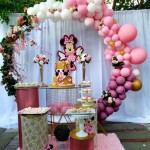How To Decorate Old Plastic Flower Pots
Plastic flower pots offer durability and affordability, making them a popular choice for gardeners. Over time, these pots can fade, crack, or simply become visually unappealing. Rather than discarding them, various decorative techniques can revitalize old plastic pots and transform them into unique and attractive plant containers.
Preparation is key for a successful and long-lasting finish. Begin by thoroughly cleaning the pots with soap and water. Remove any dirt, debris, or plant residue. A stiff brush can be useful for stubborn grime. Rinse the pots well and allow them to dry completely before proceeding.
For pots with a smooth surface, light sanding can improve paint adhesion. Use fine-grit sandpaper to gently roughen the exterior. This creates a slightly textured surface for the paint or other decorative materials to grip. After sanding, wipe the pots down with a damp cloth to remove any dust.
Painting offers a versatile way to transform plastic pots. Exterior acrylic paints are recommended for their weather resistance and durability. Spray paint provides a quick and even coat, especially for intricate designs or textured surfaces. Alternatively, acrylic craft paints can be applied with brushes for greater control and detail. Multiple coats may be necessary for complete coverage, allowing each coat to dry thoroughly before applying the next.
Adding embellishments can further enhance the appearance of painted pots. Consider decoupage, a technique involving gluing paper cutouts onto the surface and sealing them with a protective varnish. This allows for the creation of personalized designs using patterned paper, tissue paper, or even photographs. Ensure the paper is firmly adhered to the pot's surface to prevent peeling or bubbling.
Mosaics provide a unique and eye-catching decorative option. Small pieces of broken tiles, glass, or pebbles can be glued to the pot's surface to create intricate patterns or designs. Tile adhesive or strong craft glue is suitable for this purpose. Once the adhesive has dried, grout can be applied to fill the spaces between the mosaic pieces, creating a smooth and finished look.
Fabric can also be used to decorate plastic pots. Choose outdoor fabrics or repurpose scraps of weather-resistant material. Measure and cut the fabric to fit the pot's circumference, leaving extra material for overlap. Fabric glue or strong adhesive can be used to attach the fabric securely. Consider adding embellishments such as ribbons, buttons, or decorative stitching.
Natural materials like twine, rope, or jute can add a rustic touch to plastic pots. Wrap the material tightly around the pot, securing it with glue at the beginning and end. Alternatively, create a woven pattern by interlacing the twine or rope. This technique adds texture and visual interest while maintaining a natural aesthetic.
Stenciling offers a simple yet effective way to add designs to plastic pots. Choose a stencil with a desired pattern or create a custom design. Secure the stencil to the pot using painter's tape and apply paint with a stencil brush or sponge. Carefully remove the stencil once the paint has dried to reveal the design.
Distressing techniques can create a vintage or weathered look. Apply a base coat of paint and allow it to dry. Then, apply a second coat of a contrasting color. Before the second coat dries completely, use a damp cloth or sandpaper to rub away portions of the top coat, revealing the base color underneath. This creates a chipped and aged appearance.
Adding drainage to decorated pots is essential for plant health. If the original drainage holes are blocked, carefully drill new holes using an appropriate drill bit. Ensure the holes are adequately sized to allow for proper water drainage. Placing small stones or broken pottery shards in the bottom of the pot can further improve drainage and prevent soil compaction.
Protecting the decorated surface is important for longevity. Applying a sealant, such as a clear acrylic sealer or varnish, can protect the paint or other decorative elements from weathering and fading. Choose a sealant appropriate for the materials used and follow the manufacturer's instructions for application.
Repurposing old plastic containers, like yogurt cups or margarine tubs, offers an economical and sustainable way to create small starter pots. These containers can be decorated using the same techniques described for larger pots, offering a creative outlet while reducing waste.
The choice of decorative technique depends on individual preferences and the desired aesthetic. Experimenting with different materials and methods can lead to unique and personalized plant containers. Regular cleaning and occasional touch-ups can help maintain the appearance of decorated pots and extend their lifespan.

How To Decorate Old Planters Into New 5 Diy Plants Pot Makeover Ideas Garden Decor Part 1

How To Decorate Old Planters Into New Plastic Pot Painting Ideas Diy

17 Cool Ways To Decorate Your Flower Pots

Old World Stenciled Flower Pot Painting Idea About A Mom

How To Decorate Old Planters Into New Plastic Pot Painting Ideas Diy

Lime Post Diy Plant Pot Slipcovers Plants Garden Art

The Cutest Diy Idea Of Painting Plastic Flower Pots Learn To Create Beautiful Things

Turn Old Plastic Buckets Into Garden Pots Bucket Decor Ideas Crafty Diy

17 Cool Ways To Decorate Your Flower Pots

Recycle Plastic Bottles Into Hanging Lantern Flower Pots For Old Walls Vertical Garden Ideas
Related Posts







